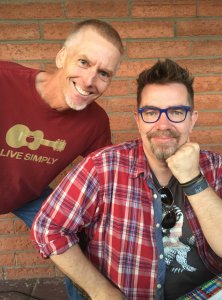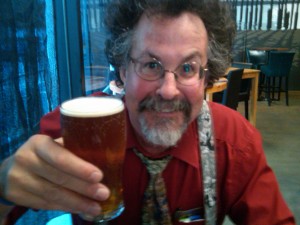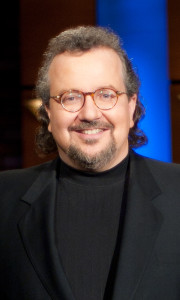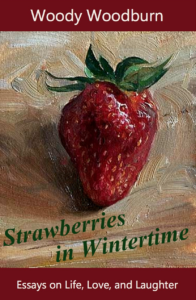
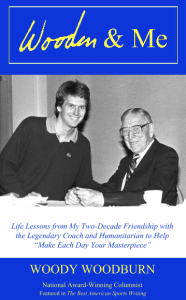 For a Personalized Autographed copy of “STRAWBERRIES IN WINTERTIME” or “WOODEN & ME” mail a check for $25 to:
For a Personalized Autographed copy of “STRAWBERRIES IN WINTERTIME” or “WOODEN & ME” mail a check for $25 to:
Woody Woodburn
400 Roosevelt Court
Ventura, CA 93003
* * *
This Mother’s Day Gift is for Kids
“Though she be but little, she is fierce!” Shakespeare wrote in “A Midsummer Night’s Dream,” and these words seem apropos when describing the curbside street library on the 2700 block of Preble Avenue in midtown Ventura.
Though it is but little, it is fiercely wonderful!
Indeed, “The Little Free Library” (charter #35222) lives up to its name: it is a mere 21 inches wide by 24 inches tall, with only two shelves. Also, its books are free.
That’s right, people are can take – and keep – a book. No library card is required. Patrons can also return a borrowed book or leave a donated book.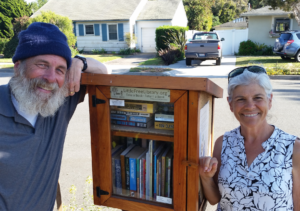
The library belongs to Tim and Cindy Hansen. More accurately, it is Cindy’s – she requested it for Mother’s Day two years past.
Tim and the couple’s adult sons Bernie and Franklin, made Cindy’s wish a reality. Perched atop a waist-high post, the “Prairie Two-Story” model they selected from littlefreelibrary.org looks like an elegant birdhouse with a picture window as a front door.
Little Free Library is a nonprofit organization aimed at increasing access to books for readers of all ages. Annually, Little Free Libraries foster the sharing of millions of books worldwide. In the Hansen’s neighborhood alone, there are two more free street libraries within walking distance.
The bottom shelf of the Hansen’s library is devoted to children’s books, and for good reason: “It’s lower and easier for the kids to reach,” Cindy notes.
Adding to the kid-friendliness are two curbside reading chairs.
Meanwhile, Tim enjoys his own nearby watching chair.
“It is a joy to sit on my porch and watch the birds all flutter away as a child comes running up to look for a new book,” Tim says, his voice filled with flight.
Wearing a navy-blue knit watchman’s cap, even on a warm afternoon, combined with his shrub-thick and long gray beard, Tim comes into focus like a Hemingway character of the sea. Cindy, meanwhile, constantly wears a smile that shines like a lighthouse.
Both have an oceanic-deep love for books.
As a child, Cindy says, the “Little House” series by Laura Ingalls Wilder “opened the world of reading for me.” She has spent her adult life opening up this same world for youth as an educational therapist and school librarian.
“I love to find that one book that lights a kid’s world on fire,” Cindy shares. This included her two sons who, she notes with a laugh, “grew up hearing me tell them to go read a book, not watch TV.”
Visiting Cindy and Tim, it quickly becomes clear that even though their street library has a top shelf of titles for adults among its roughly 50 books, their real focus is young readers. For example, Cindy routinely buys children’s books to ensure the lower shelf remains full.
“During summer, when school was out, the kids’ books really disappeared,” Cindy says, happily.
She adds, also happily: “When I’m gardening here out front, I love to see kids walk by or hop out of a car and get a book. It’s become part of the neighborhood.”
What difference can a mere few dozen books make? I am reminded of the beachcomber tossing a starfish back into the ocean, while hundreds more remained stranded on the sand after a storm, and telling a naysayer: “To this one, I’m making all the difference in the world.”
So it is with this little library, as a journal kept alongside reveals.
“I took a book, I drop a book in the night. Be back, Conrad” reads one entry.
Another: “Thankful to have such thoughtful neighbors. Reading opens our hearts and minds to a world of imagination. I’ll be back. (drawn heart)”
One more: “Thank you for having books. I enjoy it & really appreciate it.”
And, lastly, my favorite, printed in the hand of a young child: “thank you fore this little free labrary this will rilly help : ) Adeline”
I imagine this may be the first library little Adeline has ever visited. I also imagine it will forever remain her favorite.
* * *
Woody Woodburn writes a weekly column for The Ventura County Star and can be contacted at WoodyWriter@gmail.com.
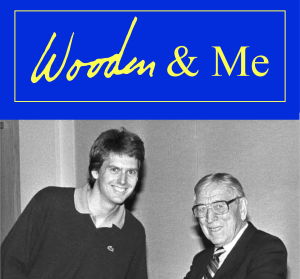 Check out my memoir WOODEN & ME: Life Lessons from My Two-Decade Friendship with the Legendary Coach and Humanitarian to Help “Make Each Day Your Masterpiece” and my essay collection “Strawberries in Wintertime: Essays on Life, Love, and Laughter” …
Check out my memoir WOODEN & ME: Life Lessons from My Two-Decade Friendship with the Legendary Coach and Humanitarian to Help “Make Each Day Your Masterpiece” and my essay collection “Strawberries in Wintertime: Essays on Life, Love, and Laughter” …
- Personalized signed copies are available at WoodyWoodburn.com
- Unsigned paperbacks or Kindle ebook can be purchased here at Amazon

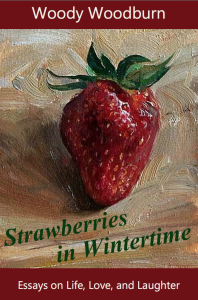 Woody’s highly anticipated new book “STRAWBERRIES IN WINTERTIME: Essays on Life, Love, and Laughter” is NOW available!
Woody’s highly anticipated new book “STRAWBERRIES IN WINTERTIME: Essays on Life, Love, and Laughter” is NOW available! 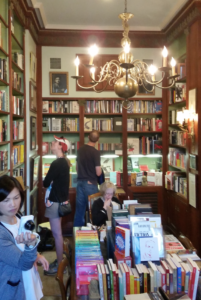

 This novel of historical fiction was originally, and enthusiastically, recommended to me when I was browsing the “New Releases” at Barnes & Noble back in 2003 – not by a staff worker, but by a perfect stranger.
This novel of historical fiction was originally, and enthusiastically, recommended to me when I was browsing the “New Releases” at Barnes & Noble back in 2003 – not by a staff worker, but by a perfect stranger. More precisely, a gift copy of “Gloryland,” a novel by Shelton Johnson, came to me in the mail out of the blue and anonymously. I searched the Barnes & Noble box for a clue as to whom to thank, but there was no name on the receipt nor a gift note.
More precisely, a gift copy of “Gloryland,” a novel by Shelton Johnson, came to me in the mail out of the blue and anonymously. I searched the Barnes & Noble box for a clue as to whom to thank, but there was no name on the receipt nor a gift note.

